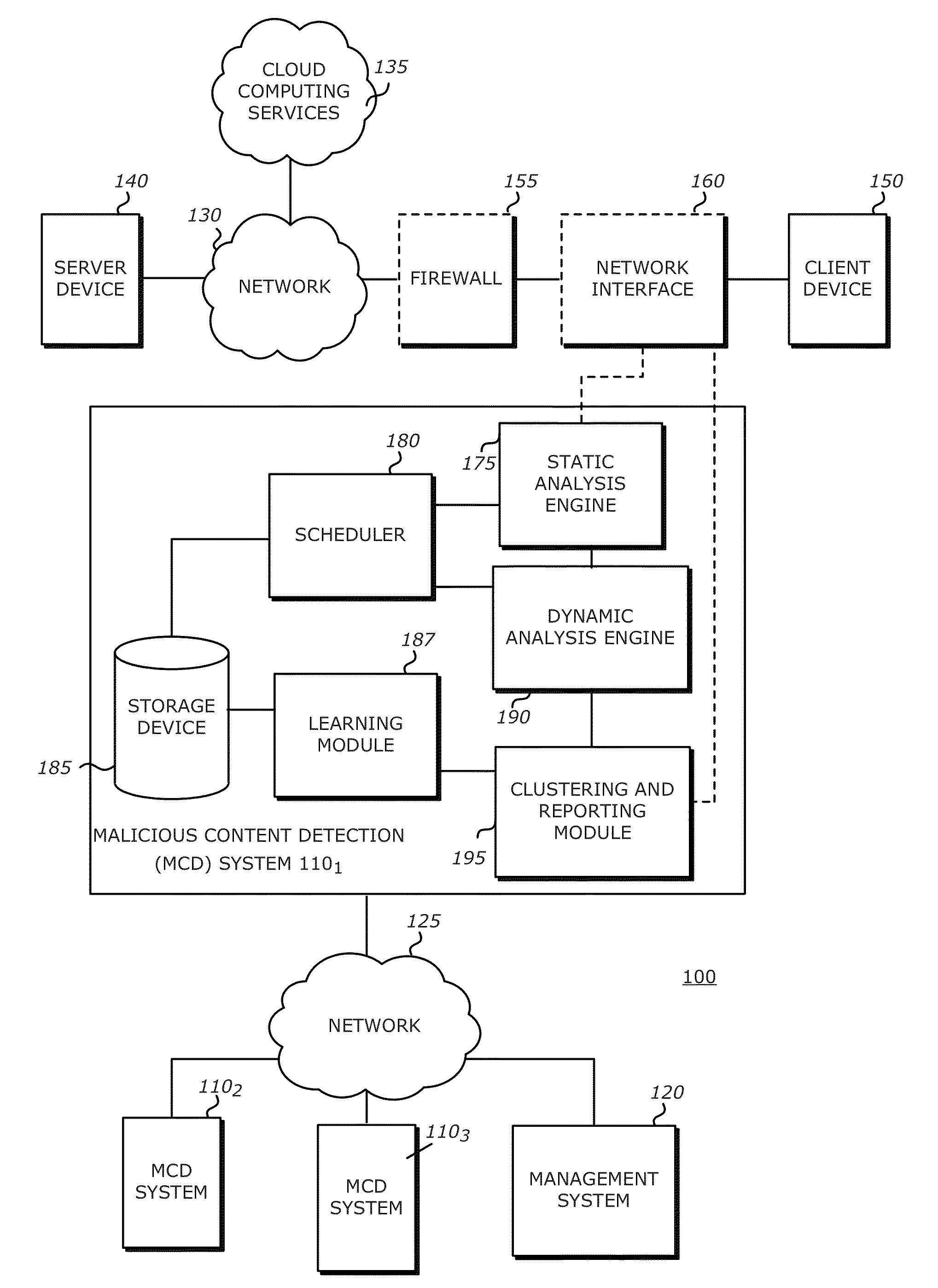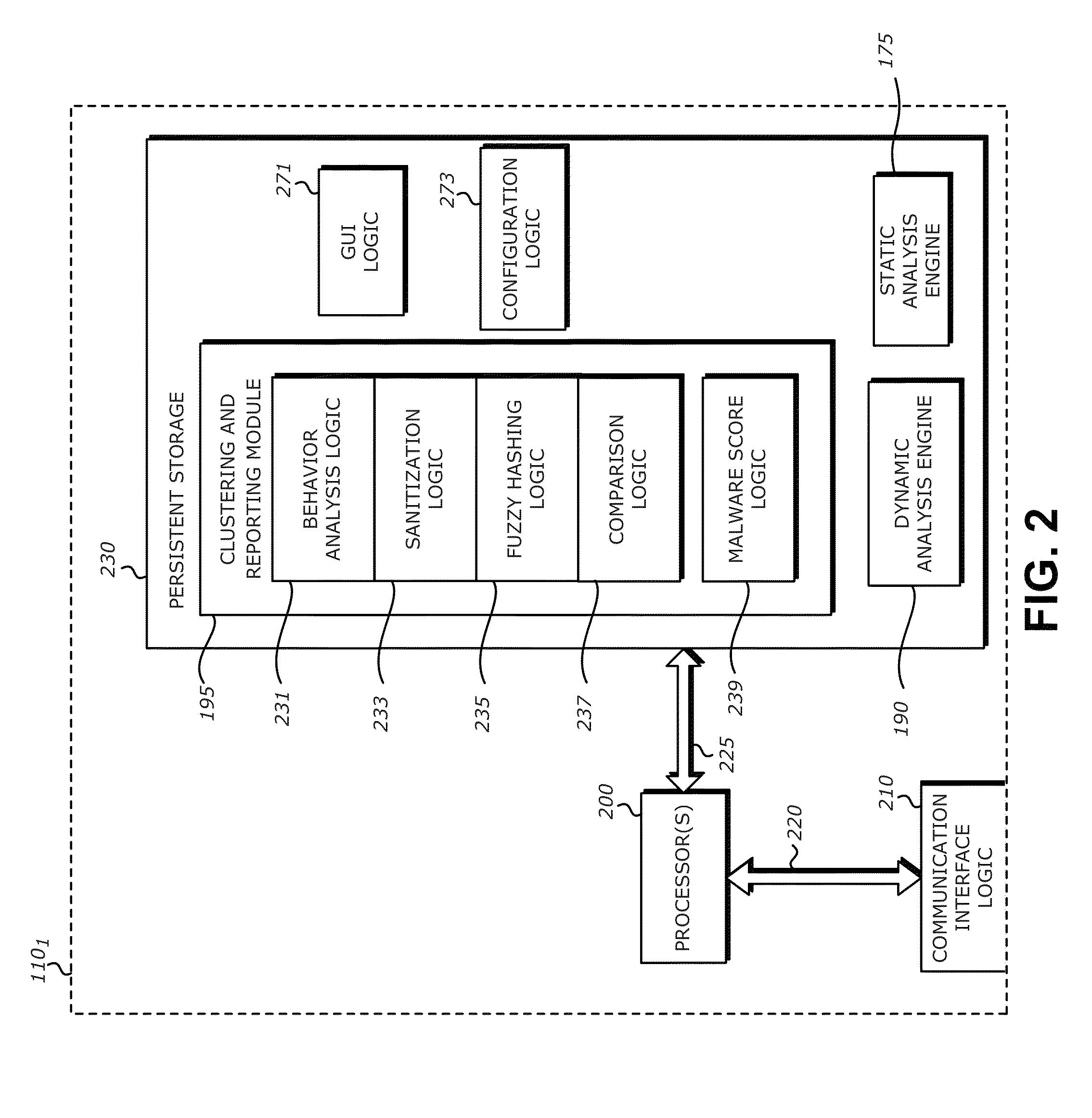Fuzzy hash of behavioral results
a behavioral result and fuzzy hash technology, applied in the field of network security, can solve the problems of adversely affecting (i.e., attack) the normal operation of the computer, web page to be requested from a malicious web site may be unknowingly requested, and malicious software (malware) has become a pervasive problem for internet users
- Summary
- Abstract
- Description
- Claims
- Application Information
AI Technical Summary
Benefits of technology
Problems solved by technology
Method used
Image
Examples
Embodiment Construction
[0015]I. Overview
[0016]In one embodiment of the invention, a communication system is provided that includes a plurality of malicious content detection (MCD) systems communicatively coupled to a management system via a network. Each of the MCD systems may detonate, execute, open, or otherwise process a suspected malware object such that the suspect object conducts / performs a set of behaviors. These behaviors are collected and recorded such that further analysis with objects previously analyzed and assigned to clusters may be performed. In one embodiment, the recorded behavior data for the suspect object may be used to generate a fuzzy hash. A fuzzy hash allows the comparison of objects to determine similarity of the objects instead of necessarily a direct match. In comparison, traditional hashing techniques only allow a comparison of objects to determine an exact match. By allowing the determination of “similar” objects, fuzzy hashes afford a greater leniency in classification and ca...
PUM
 Login to View More
Login to View More Abstract
Description
Claims
Application Information
 Login to View More
Login to View More - R&D
- Intellectual Property
- Life Sciences
- Materials
- Tech Scout
- Unparalleled Data Quality
- Higher Quality Content
- 60% Fewer Hallucinations
Browse by: Latest US Patents, China's latest patents, Technical Efficacy Thesaurus, Application Domain, Technology Topic, Popular Technical Reports.
© 2025 PatSnap. All rights reserved.Legal|Privacy policy|Modern Slavery Act Transparency Statement|Sitemap|About US| Contact US: help@patsnap.com



